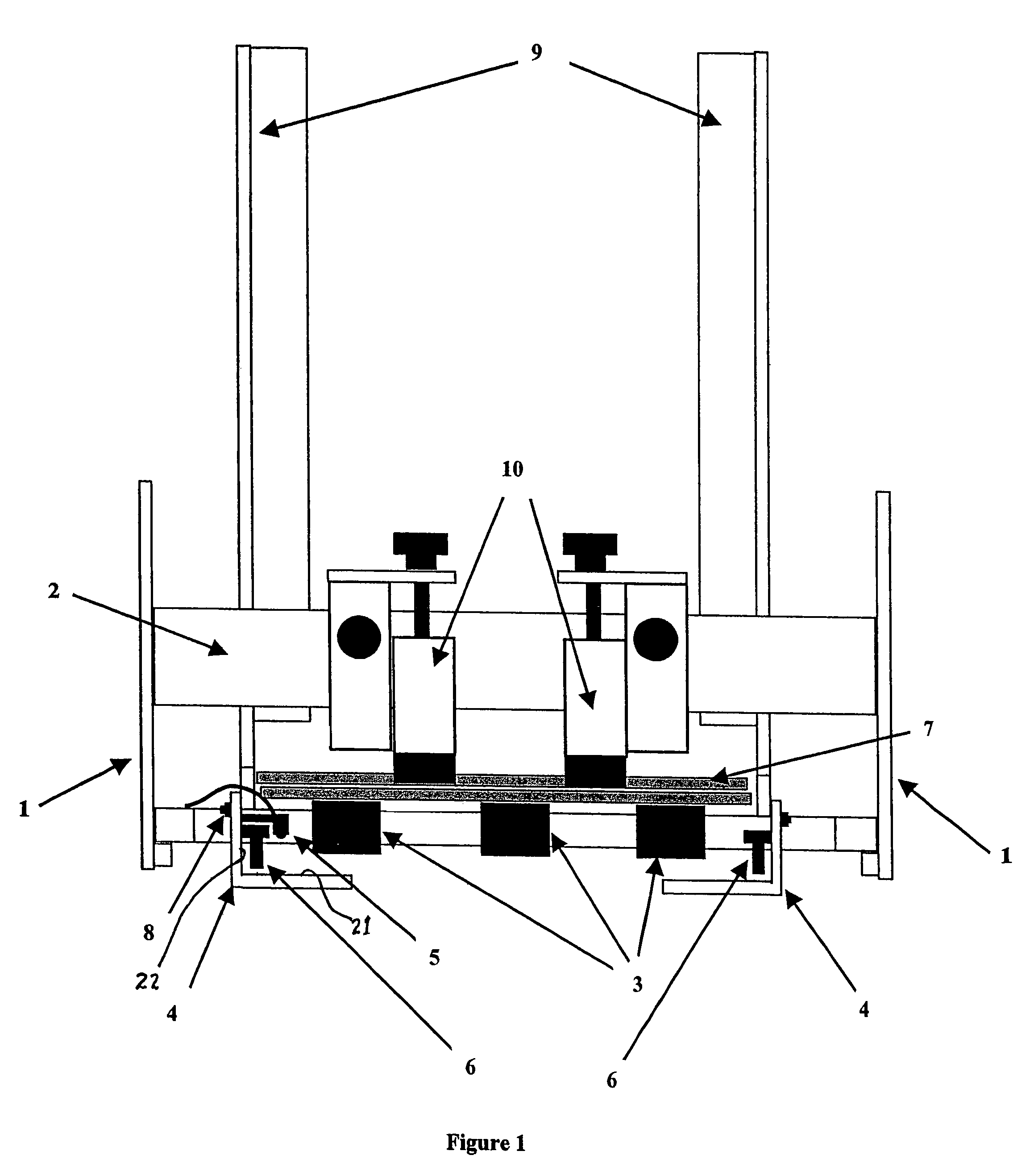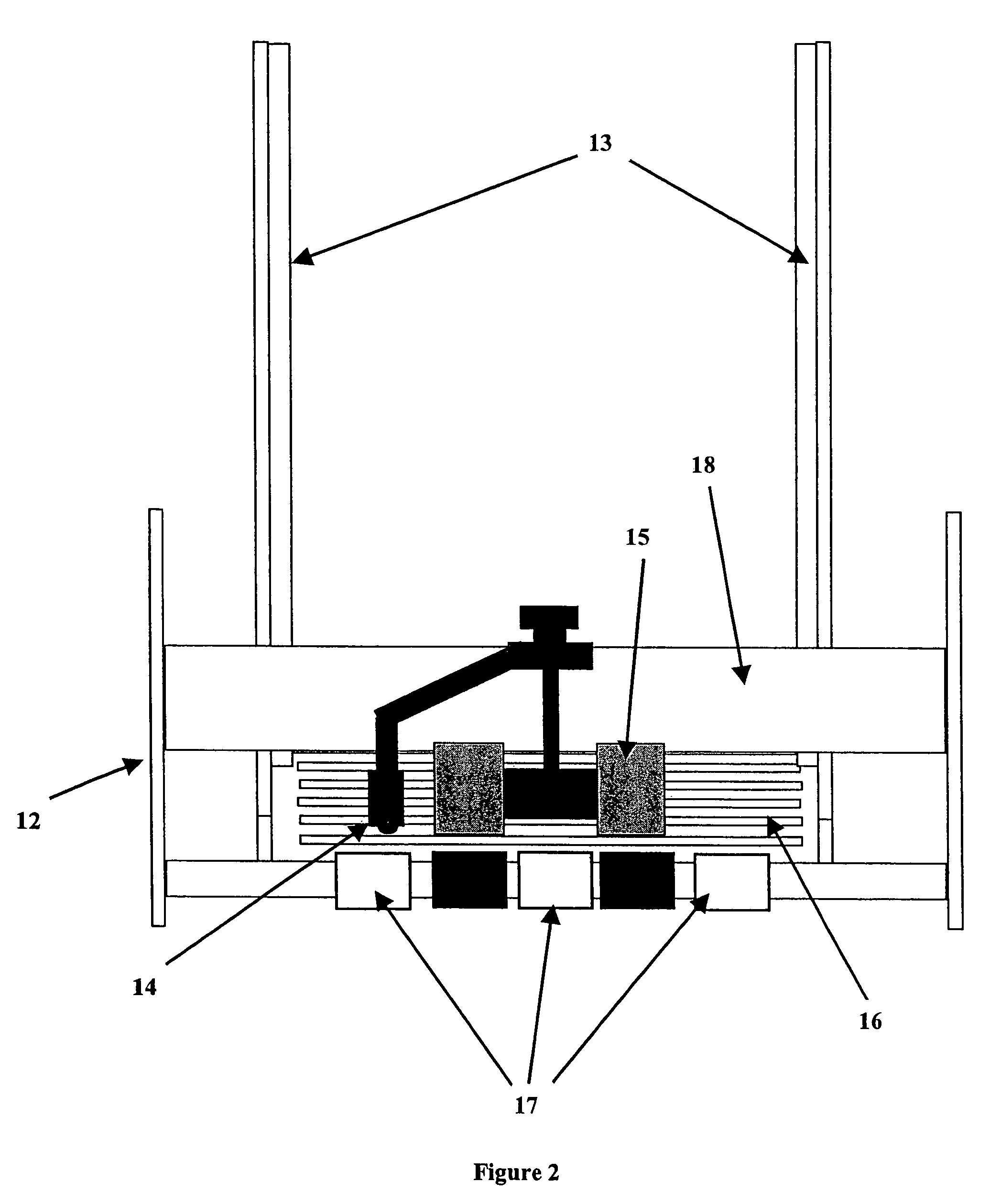Sheet feeder
a feeder and sheet technology, applied in the field of sheet feeders, can solve the problems of insufficient sheet guides, sheets skewing, inconsistent set-up and operation, etc., and achieve the effects of reducing stoppages, facilitating adjustment of delivery height, and reducing the number of stoppages
- Summary
- Abstract
- Description
- Claims
- Application Information
AI Technical Summary
Benefits of technology
Problems solved by technology
Method used
Image
Examples
Embodiment Construction
[0016]Referring to FIG. 1, the feeder of the preferred embodiment is made up of side plates 1 that are assembled to and support a bridge 2. Attached to the bridge 2 are paper guides 9, which serve to hold the stack of sheets 7 in a near vertical stack and also extend downward and through the feeder to the exit end of the feeder.
[0017]Attached to the paper guides 9 are two paper guide extensions 4 which include a vertical portion for lateral control of the sheets 7 and a horizontal portion for vertically controlling and guiding the sheets.
[0018]Attached to the paper guide extensions 4 are two hold down straps 6, which serve to hold each sheet downward against the horizontal portion of the paper guide extensions. These help to present each sheet at a consistent height to the mail inserting machine.
[0019]Attached to one of the paper guide extensions 4, is an electronic photo eye 5, which serves to stop the advancement of each sheet as the feeder motor advances it forward. When the shee...
PUM
| Property | Measurement | Unit |
|---|---|---|
| speed | aaaaa | aaaaa |
| flexibility | aaaaa | aaaaa |
| area | aaaaa | aaaaa |
Abstract
Description
Claims
Application Information
 Login to View More
Login to View More - R&D
- Intellectual Property
- Life Sciences
- Materials
- Tech Scout
- Unparalleled Data Quality
- Higher Quality Content
- 60% Fewer Hallucinations
Browse by: Latest US Patents, China's latest patents, Technical Efficacy Thesaurus, Application Domain, Technology Topic, Popular Technical Reports.
© 2025 PatSnap. All rights reserved.Legal|Privacy policy|Modern Slavery Act Transparency Statement|Sitemap|About US| Contact US: help@patsnap.com



